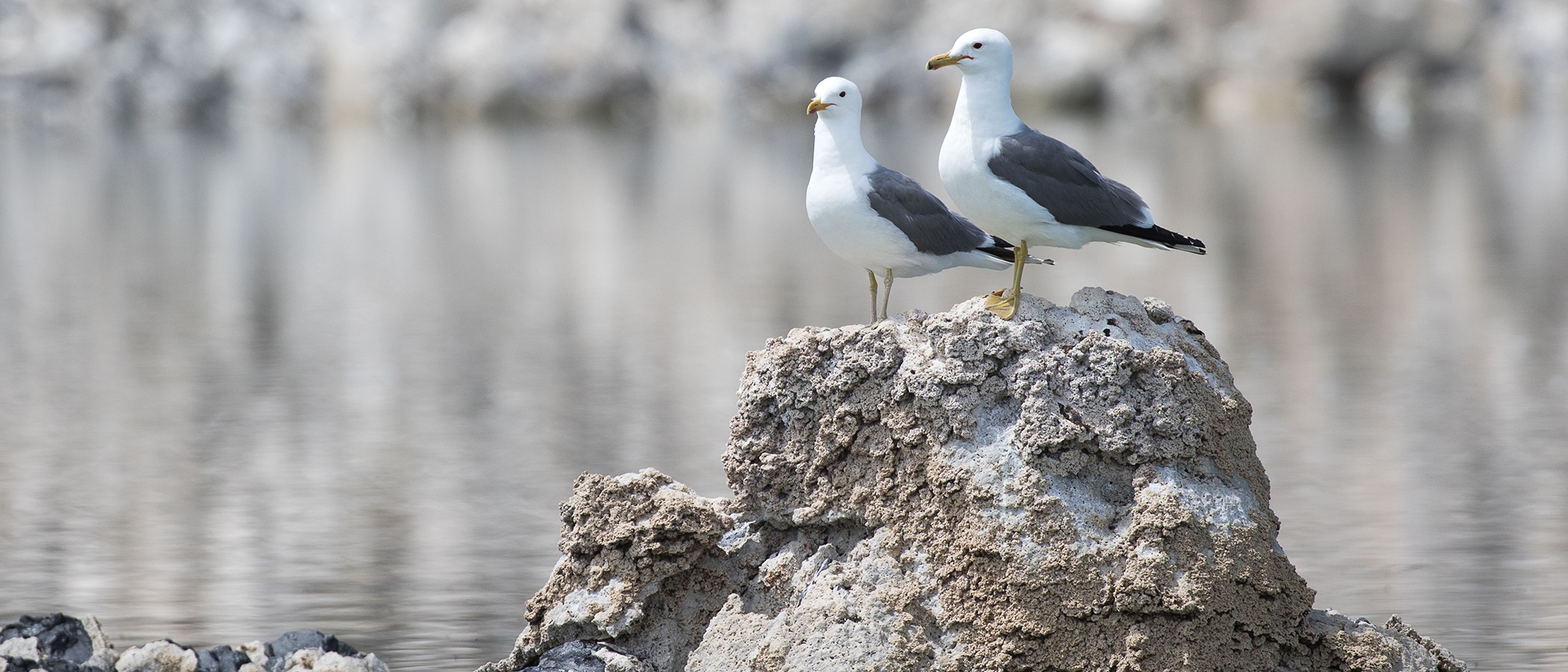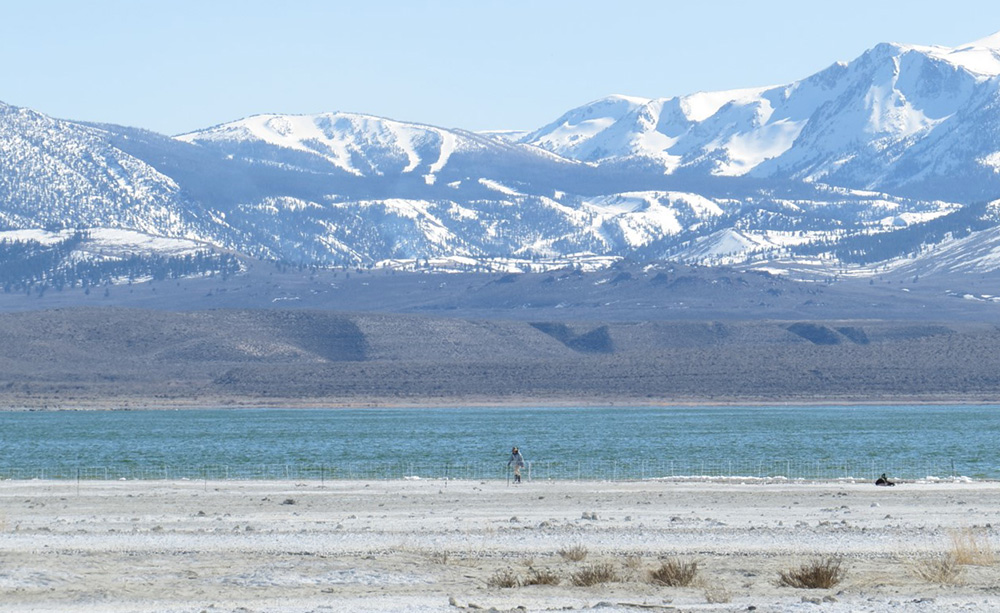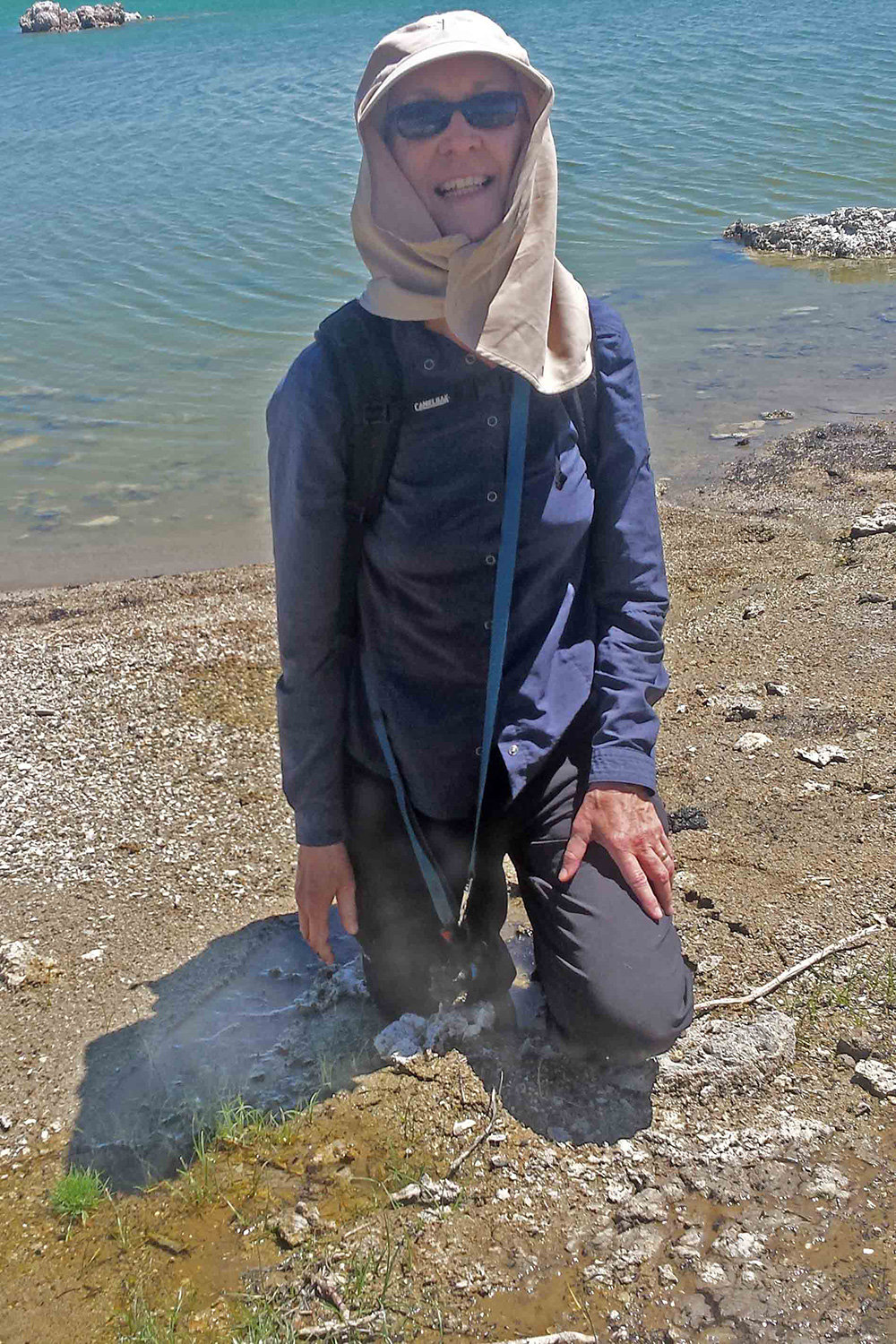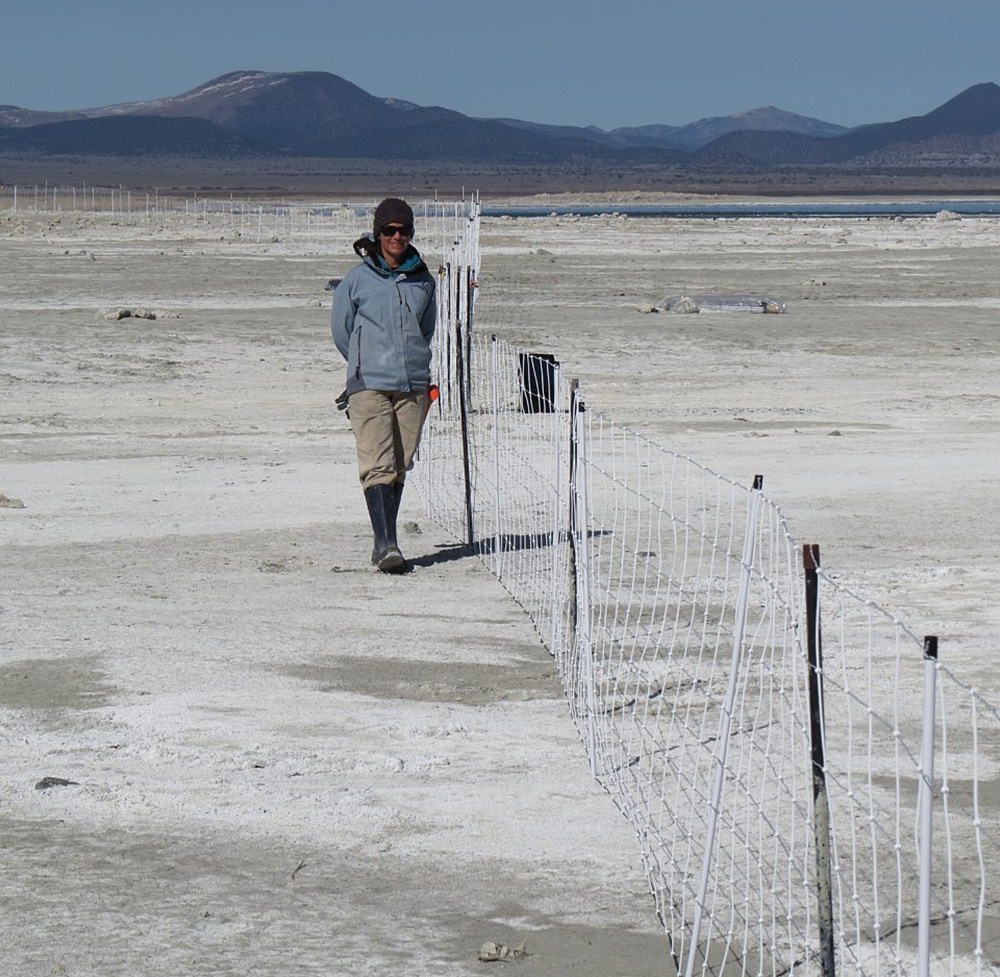
This post was written by Terry McLaughlin, 2012 Outdoor Experiences Lead Instructor, 2014 & 2015 Interim Information Center & Bookstore Manager, and 2015–2017 Membership Assistant.
Last Wednesday my husband and I struck out across the landbridge heading towards Negit Island. Our destination: check out the one-mile-long temporary fence being installed to protect the nesting California Gulls.

Thanks to all the donors who supported a successful #LongLivetheGulls Indiegogo campaign to raise funds to purchase the fence materials. Now the Mono Lake Committee had to meet a lofty goal: The fence had to be installed and fully functional by April 1.
April 1 marks the beginning of gull nesting season, which triggers the hard closure of Mono Lake to hikers and boaters for a one-mile radius surrounding the islands in order to protect these nesting birds. The closure lasts until August 1 each year.
After an hour of route-finding and scrambling, we arrived at the fence. The Committee was fortunate that two locals knew how to design and install the fence. Gull researcher Kristie worked on one end; her partner Joel worked a mile away, on the other end of the fence.
The design of the fence is remarkable—lightweight and flexible with poles supporting a net of electrified wire. Different sections of the fence operate off different batteries, so if one section shorts out, the bulk of the fence remains functional.
The two ends that drop down into the corrosive water of Mono Lake were probably the most difficult to design. The electrified part of the fence cannot go in the water, so it ends on dry land, and sections that are identical in appearance but not charged extend into the water. The ends will be moved as the protective moat of lake water rises with the melting snows.
The front of the fence is guarded by two additional strands of electrified wire, right at coyote-nose height. The idea is that a curious coyote exploring the landbridge bumps into the fence, gets a jolt on the nose, and learns to avoid the area. If they get past the first wire, they run into the net of fencing and get the message loud and clear.
Kristie and Joel, being Mono Basin residents, knew that they had to work when the weather permitted. They would put in long, 14-plus hour days, installing the fence when the weather allowed. They know the weather here changes on a dime. A big wind blowing up would render working conditions intolerable.
They had ferried all the building materials across the lake in a small, aluminum motorboat also used for gull research during the summer months. Once the materials were in place, their daily “commute” to the worksite mirrored my efforts: walking up and down over old Mono Lake shorelines, route-finding between rivulets, avoiding the infamous “Mono Muck” which can swallow a person whole! Or at least suck off their shoes and give them a good sliming.
Having hiked out to the landbridge there is no question in my mind that the fence is necessary. Coyotes are one of the most adaptable animals around. Following five years of severe drought, coyote tracks punctuated the muck like periods at the end of a sentence.
The fence was fully installed and functional on time. It will remain in place until after nesting season, and then safely stored in the hopes that Mono Lake rises and the fence is never needed again.
Top photo courtesy of Point Blue Conservation Science.


